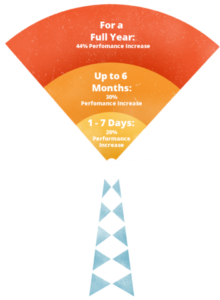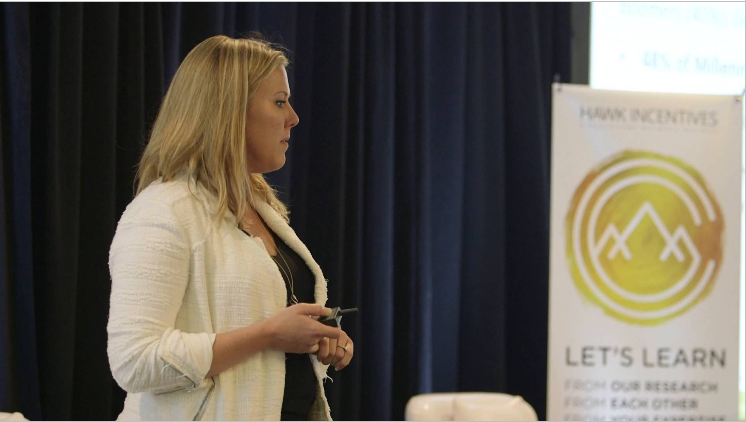Incentives for Employees: A Comprehensive Overview
Definition, Success & Popularity of Incentives for Employees
What is an incentive?
Rewards or recognition offered in exchange for work performance.
What makes incentives do well?
To be successful they must:
…promote or encourage specific actions
…by a specific audience
…to produce measurable outcomes
…through integrated motivational strategies
…during a defined time period
How popular are they?
-
In the U.S., more than 50% of companies use incentive programs and spend over $77 billion annually on them.
-
Incentives (other than cash) are a $46 billion industry.
-
The industry has more than doubled in the last 10 years.
Incentive Vocabulary
Several of these terms are used interchangeably, which can be mystifying in conversation.
These definitions will help: so read them, know them, live them.
AWARD
Can be in the form of money, prizes, plaques, travel and public commendations. The payouts of sales contests are usually called “awards.”
EMPLOYEE ENGAGEMENT
An individual sense of purpose and focused energy, evident to others in their display of personal initiative, effort and persistence directed toward organizational goals. Many organizations create their own definition for this term, but everyone agrees on this: higher employee engagement means higher work performance and company loyalty.
INCENTIVE
Any form of variable payment tied to employee performance. The payment can be tangible or intangible, and may or may not have cash value. Incentives for employees are generally non-discretionary and can be paid at any time of the year. Includes awards, rewards and recognition.
REWARD
An item given to an individual or team for meeting a pre-determined goal. Rewards for employees to motivate them can be smaller if given more frequently.
RECOGNITION
After-the-fact display of appreciation for individual or team efforts. Can be tangible or intangible, and range from a thank-you email to travel.
RECOGNITION PROGRAM
A policy of acknowledging employee contributions after the fact, possibly without predetermined, expected goals or performance levels. Examples include giving employees clocks on milestone anniversaries, granting an extra personal day for perfect attendance, or paying a one-time cash bonus for making a cost-saving suggestion.
SPOT AWARD
A type of informal recognition that is delivered spontaneously or “on the spot.”
TOTAL REWARDS
The monetary and non-monetary rewards for employees to motivate them to optimize their time, talents, efforts and results. Deliberately includes all five key elements determined to enhance employee engagement: compensation, benefits, work-life balance, performance and recognition, and development opportunities.
Employee Incentive Benefits
Incentives help engage employees, and engaged employees enhance your bottom line. So yes, incentives are an indirect route to bottom-line results. And no, you shouldn’t let the indirect-ness of their link to the bottom line discourage you.
Organizations with higher than average employee engagement have:
Land of Incentives for Employees
It’s amazing how many places there are for employee incentives
Some are massive and obvious, others are unexpected and easy to miss. It’s good to know your options before you map out an incentive plan.
A. RETIREMENT PEAK
The close of a career commands respect and acknowledgement from 42% of companies.
B. SERVICE ANNIVERSARY RIDGE
The most widespread type of incentive is linked to loyalty and used by 90% of organizations.
C. IDEA GENERATION GORGE
27% of companies use incentives to mine employees for innovative ideas.
D. EMPLOYEE-OF-THE-ISLAND
Whether “of-the-year” or “of-the-month”, 29% use this personal callout to inspire individuals.
E. PEER-TO-PEER TRIBUTARY
To keep the idea of great performance circulating, 43% have peer-to-peer programs.
F. FAMILY EVENT RAPIDS
Life has lots of ups and downs. 25% of companies support their people with incentives around major events.
G. PERFORMANCE RECOGNITION LAKE
Strong performance has a ripple effect. That’s why 79% recognize it.
H. SAFETY HARBOUR
Cars and machinery and chemicals can create problems. That’s why 22% of employers enhance safety programs with incentives.
I. SALES PERFORMANCE SPIRE
Sales can crumble without goals, so 40% of employers attach them to sales incentives.
J. WOODLANDS OF WELLNESS AND OTHER SPECIFIC BEHAVIOURS
Employee wellness is the fastest-growing of this incentive type, which is found in 34% of organizations.
K. ATTENDANCE MARSH
Life’s complications can erode away at attendance. 12% of organizations use incentives to keep it more stable.
Wellness Incentives
Wellness programs are popular because health care costs have ballooned in the last 5 years, and they’re able to reduce costs as much as $225 per employee. Plus, wellness programs often improve employee morale. Positive rewards can increase wellness program participation from 26% to 90%.
Safety Incentives
Safety programs are designed to motivate employees to focus on being safer at their workplace, in all sorts of ways: by developing defensive driving habits, taking frequent breaks, choosing ergonomics, and more. A properly designed safety incentive program not only rewards safe work, but also promotes proactive behaviour, such as making safety suggestions to others, identifying hazards and participating in safety committees.
Peer Recognition
The Gallup Organization has found that in productive and engaged workplaces, employees receive recognition every seven days. Peer recognition programs are a simple, powerful way to improve working relationships, employee engagement and retention. Peer recognition can work all sorts of ways: employees can show appreciation one-on-one or in public, using paper notes or e-cards, bulletin boards or social media.
Go Long to Send a Strong Signal
The longer the duration of a reward or employee recognition program, the greater the chance that employees get your message and make positive changes.
Is an Incentive the Answer?
Make sure the answer to all these questions is YES before you launch an employee rewards or recognition program. Otherwise, this may not be the right response to the situation.
✓ YES ☐ NO – Is current performance on specific goals too low?
✓ YES ☐ NO – Is the cause motivation, not a lack of skill or training?
✓ YES ☐ NO – Can you measure current and desired performance?
✓ YES ☐ NO – Are the required goals challenging, yet achievable?
✓ YES ☐ NO – Is it possible to continue other work at the current level?
Incentives & the Mind: Human Drivers
There are 4 basic human drivers, and incentives are able to tap into all of them.
THE COLLECTOR
It’s human nature to gather things and status. Plaques with years of service appeal to the desire for status. Other types of rewards for employees to motivate them tap into this drive as well, engaging people through their desire to acquire more possessions. You’ll see this most often in incentives.
THE KILLER
People are biologically motivated to defend what is theirs. The winner of last year’s “Top in Sales” title isn’t going to let it go without a fight. And employees engaged by strong recognition programs will work hard to protect their company against competitive threats.
THE SOCIALIZER
Like it or not, we’re wired to bond, and most of us experience the workplace first as a social setting. This is what makes recognition so powerful: celebrating stories about accomplishments with co-workers and managers makes people feel more appreciated.
THE EXPLORER
People have an innate desire to contribute to something bigger in creative ways. Frequent acknowledgment of daily contributions connects us all to work in a more meaningful way, encouraging a higher level of commitment and more innovative thinking.
Left brain vs. right brain
Researchers have shown it’s physically more likely for the brain to access a real image from the right brain.
Tangible Incentives:
are vivid and full of sensory-rich specifics, so they’re stored in the
emotional right side of the brain
and “pulled up” often in anticipation.
Cash Incentives:
are abstract numbers, not a clear image, so they’re stored in the left,
logical side of the brain
and accessed less frequently and in less detail.
Did You Know?
People weigh an incentive’s value against how hard it is to earn. Ask too much, and people will dismiss your incentive. Choose employee rewards that inherently have higher value, and you can inspire higher performance. Keep in mind that indulgences, especially those that don’t have to be justified, are more valuable. So are things that attract peer attention and stand out from regular pay.
Tangible Items as Incentives
What do all these rewards or incentives for employees have in common?
They go beyond praise and are things you can see or do. Some require a sizable budget; some don’t need any at all.
PERKS
Low-to-no-cost incentives are ways to give employees the VIP treatment. For example: front row parking, an extra day off work, or a casual dress day.
TRAVEL
The motivational power of travel can’t be denied, whether it’s a weekend getaway for two or two weeks at an exclusive resort for the whole team.
MERCHANDISE
We’ve come a long way from the gold retirement watch. Now logoed items mark achievements, and reward catalogues provide more choices.
TROPHIES
Items like certificates, plaques, pins, and medals are lasting reminders of achievement meant for display. This aspect can give other rewards “trophy value” too.
FINANCIAL
Gift cards (the most wildly popular incentive), cash and gift certificates give people the chance to pick what they want, and have the company pick it up.
Did You Know?
Gift cards are the number one employee incentive, and a whopping 62% of companies offer them. They may seem the same as cash, but they’re actually quite different.
Why Companies Like Gift Cards
Recognition as an Incentive
Some of the best recognition methods start with “I”
The first letter of the word intangible. This is a nice little memory aid, as intangibility is also what separates employee recognition from rewards.
INTERESTING WORK
At least part of your work should be of great interest. Even people with inherently boring jobs become more productive when given at least one stimulating task or project.
INVOLVEMENT
The people who are closest to a situation have the best insight on how to improve it, yet are rarely asked for it. Their involvement enhances commitment and eases implementation of changes.
INFORMATION
Employees crave knowledge about how they are doing and how the company is doing. Start telling them, and soon they’ll be turning out the lights when they leave a room.
INCREASED VISIBILITY
For some workers, getting company visibility is highly rewarding. Copy a letter of praise, acknowledge their work at a meeting, or hang photos on a “wall of fame” to motivate them.
INDEPENDENCE
All employees appreciate flexibility in their job, and it contributes to more desirable performance. Provide assignments in a way that tells what needs to be done without dictating exactly how to do it.
Types of Structure for Incentives Programs
Employee incentives are used to support safety, wellness, years of service, productivity, sales, recognition and more. They can be structured in a variety of ways.
PEER RECOGNITION
In this “culture of recognition” equals give each other praise or rewards for good work.
SPOT REWARDS
Employees get handed rewards instantly, or “on the spot”, when they show strong performance.
CONTESTS
Teams or individuals compete to win a reward. Popular for highly competitive salespeople.
POINTS PROGRAMS
Employees collect points over time for meeting various goals. Points can be redeemed instantly or saved up.
ONE-TIME REWARDS
Incentives at their most straightforward: meet the goal, earn the reward. This structure is ideal for launching new products and policies.
Key Trend #1: Online & Mobile Incentives
The number of online employee incentive programs has almost doubled in size every year. And nearly every traditional incentive company offers their clients an online component for incentive plans. Why the increase?
Company Reasons
Online Incentives are faster and smarter:
Online incentive programs save money and time while allowing organizations to have much greater control.
Mobile devices help planners keep up: 1 in 10 incentive planners uses mobile device apps to enhance onsite experience or show program results.
Employee Reasons
At home and away, online is a part of life:
There are 4.6 billion mobile users globally, and 1.7 billion Internet users.
We embrace technology and grow with it: nearly 50% of all online consumers in the U.S. are now advanced users of smartphones, social networks, and other emerging tools.
Key Trend #2: Incentives with Gamification
First things first: what is it?
Gamification is adding one or more standard game elements into something that’s not a game.

Player Types
-
The Collector: Gains resources and status
-
The Socializer: Builds relationships
-
The Killer: Keeps what’s important safe
-
The Explorer: Creates and seeks purpose
Sound familiar? These are the 4 basic human drivers you saw earlier. Games are designed to tap into our innate motivations to collect, defend, connect, and explore.
Games enhance, they don’t replace:
Gamification focuses on short-term results, rewarding and encouraging basic, measurable behaviours. This makes it a great tool for encouraging participation in an existing employee incentive program, but not a substitute for elements that foster long-term change and big-picture thinking.
POINTS
Do something, get a point. Or the opposite: Don’t do something, lose a point. This is one of the major foundations of gamification systems, and most other elements start here.
ACHIEVEMENTS
These are similar to points, but they’re specific, super-sized and given for performing tasks or reaching goals outside of the straightforward point system.
BROADCASTING
Nothing motivates like an audience or a competition, right? Adding a social element to an activity is a great motivator, whether you’re challenging others or celebrating accomplishments.
BRAGGING RIGHTS
This is what you get when you put all the other elements together. Badges, stickers, medals and leader boards are used to classify points and achievements, and check your standing against others.







